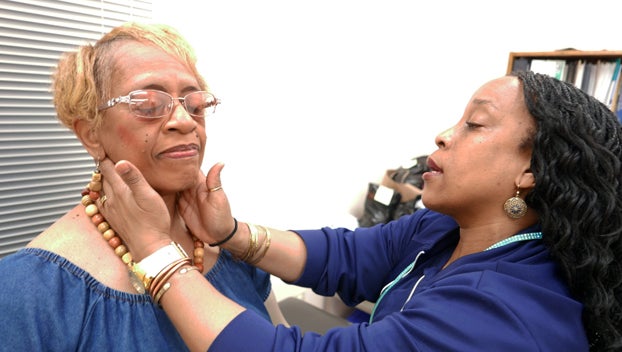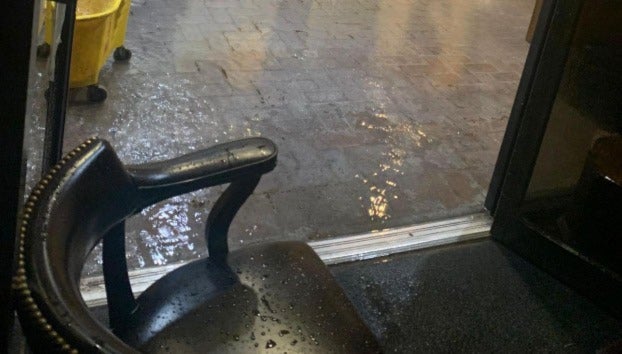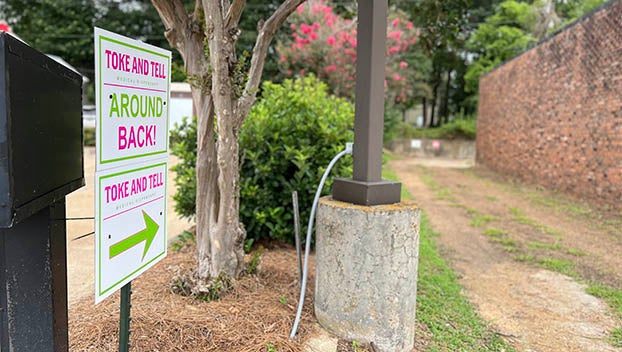Lymphedema isn’t curable but therapy can make it manageable
Published 3:58 pm Friday, May 4, 2018
NATCHEZ — Hollis B. Davis had a mastectomy in 2010 due to breast cancer.
Then she started developing swelling in her left arm, the same side as her mastectomy.
Later she was diagnosed with lymphedema, a chronic condition that affects millions of people who have damaged or weakened lymphatic systems, and it is not uncommon for women who have had mastectomies to develop lymphedema.
Lymphedema causes range from congenital lymphatic problems to acquiring the condition after surgery such as a mastectomy that affects lymphatic system.
Regardless of how the condition is acquired, the symptoms are the same. The poorly functioning lymph system causes fluid to back up in the tissue of various body parts including the trunk, arms and or legs.
The severity of the swelling varies from patient to patient, said Naydza Muhammad, certified occupational therapist and certified lymphedema therapist at Merit Health Natchez Outpatient Therapy Services.
No known cure exists for lymphedema, Muhammad said. It can only be managed.
“We manually move the area of the congestion,” Muhammad said of the treatment she offers.
The technique is somewhat akin to a massage.
The process begins by lightly touching the patient in the areas of the lymph nodes to awaken them and then by lightly rubbing the swollen area to manipulate the fluid to move to another part of the body where it may then properly drain from the body.
The process, Muhammad said, is difficult because the fluid is embedded in the body’s tissue.
She said that if the fluid were contained in body cavities like a balloon, it would be easier to drain, but she said the fluid is contained in the tissue, which is more like trying to drain a sponge.
“If it were like a balloon, you could just stick a needle in and drain it,” Muhammad said.
The congestive fluid therapy can have dramatic results in reducing the swelling, but it must be regularly administered, and once Muhammad’s patients have been with her for two or three months, which is about what most health insurance allows, the patients continue to do the process on themselves.
Davis has been visiting Muhammad for about two and a half months this time around. She originally went to Muhammad last year for about three months after she developed lymphedema following her mastectomy.
“It helped quite a bit,” Davis said of the treatment.
Davis, a self-employed secretary, said the therapy has enabled her to continue her work.
Following her initial treatment with Muhammad, Davis said she maintained a daily regimen of self-treatment and wearing a compression sleeve on the swollen arm.
Recently, however, Davis said the swelling moved to her left hand and the self-treatment became more difficult, so her doctor recommended she go back to Muhammad.
“She got me a hand sleeve,” Davis said, showing a compression sleeve that includes a portion to cover her hand with a hole for the thumb to extend through.
Lymphedema patients must wear compression clothing on the swollen body part to keep the swelling down between congestive therapy treatments.
The sleeves, which can cost $120 per sleeve, must be worn daily and it is recommended to have two sleeves per limb body part to be covered and the sleeves must be replaced every six months.
Medicare does not currently pay for the sleeves, said Muhammad, who is a member of the Lymphedema Advocacy Group that is lobbying Congress to have Medicare include paying for the sleeves.
Muhammad said she has spent time lobbying Mississippi’s congressional delegation and U.S. Rep. Gregg Harper has sponsored the Lymphedema Treatment Act, which she said she has gotten 100 percent support from Mississippi’s delegation.
“We’ve got a little momentum,” Muhammad said. “I’m hoping this bill will go to a vote this year.”






